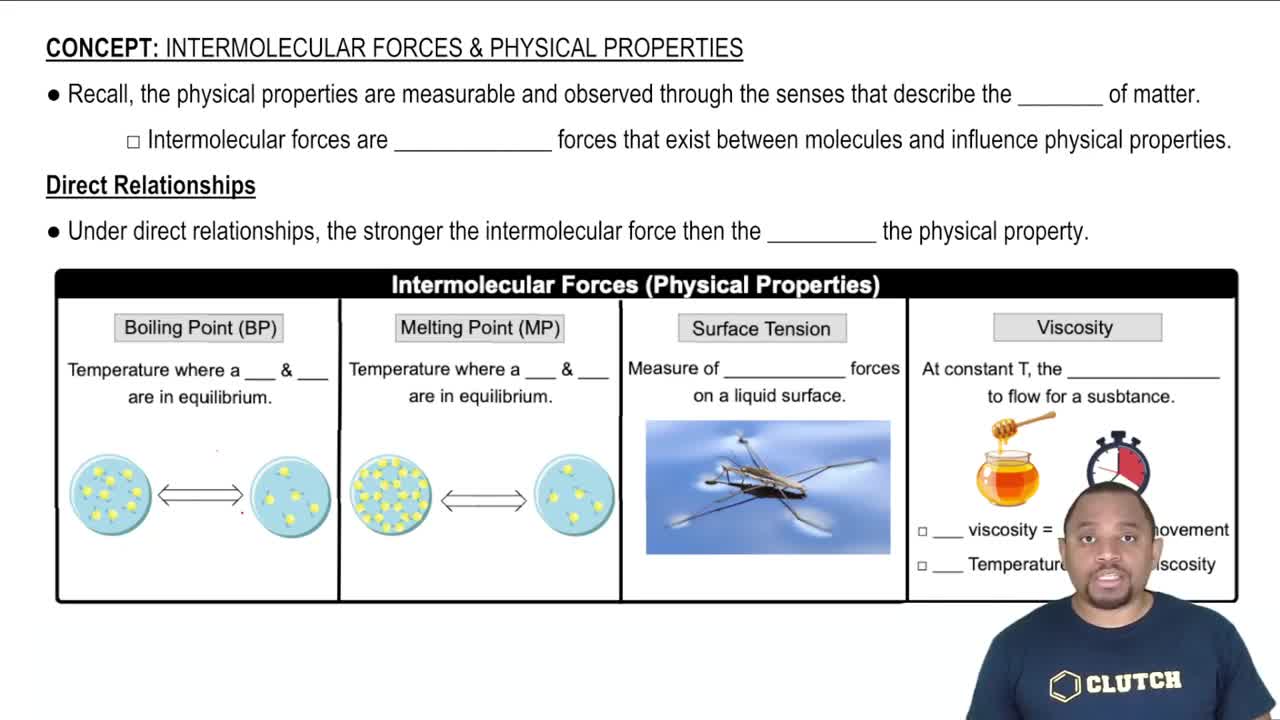Here are the essential concepts you must grasp in order to answer the question correctly.
Viscosity
Viscosity is a measure of a fluid's resistance to flow, which is influenced by the size and shape of its molecules. Larger molecules typically have greater intermolecular interactions, leading to increased viscosity. In hydrocarbons, as molecular weight increases, the viscosity tends to double due to these enhanced interactions, making it harder for the fluid to flow.
Recommended video:
Intermolecular Forces and Properties
Surface Tension
Surface tension is the energy required to increase the surface area of a liquid, arising from cohesive forces between liquid molecules. While larger molecules can contribute to surface tension, it is also significantly affected by the strength of intermolecular forces. In hydrocarbons, the increase in surface tension from hexane to decane is relatively small, indicating that other factors, such as molecular flexibility, play a role.
Recommended video:
Intermolecular Forces and Properties
Intermolecular Forces
Intermolecular forces are the attractive forces between molecules that influence physical properties like viscosity and surface tension. These forces include van der Waals forces, dipole-dipole interactions, and hydrogen bonding. In the context of hydrocarbons, the balance between molecular weight and the strength of these forces helps explain why viscosity increases significantly while surface tension changes only modestly.
Recommended video:
Intermolecular vs Intramolecular Forces



